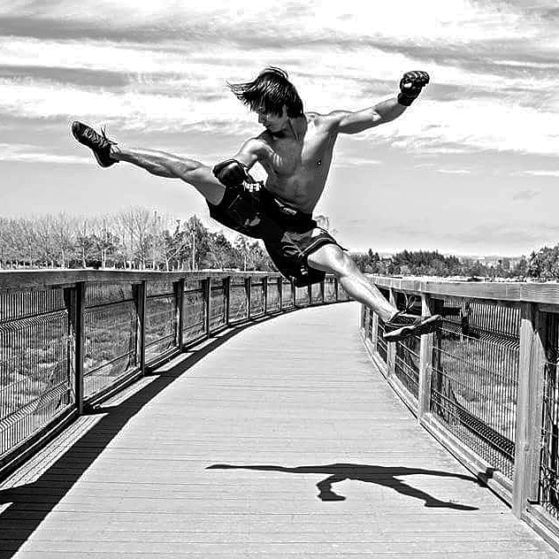There are no shortage of distractions and stimuli in our daily lives – our attention is constantly pulled in multiple directions. Everything and anything are competing and demanding for our attention in any given moment. And with the ease of access to technology, such as the smartphones (which are practically super computers), many of us are training ourselves to have shorter attention spans or to be distracted through the repetition of task-switching and spontaneous engagements with random, unrelated tasks/activities throughout the day. Grabbing the smartphone or opening up our laptops is almost like playing Russian roulette with yourself – not knowing if or when your attention will be hijacked. And while there IS a benefit of having the cognitive flexibility to switch gears and adapt to new tasks, interruptions that triggers the compulsion and urge to give away your sovereignty impairs other important areas of life. More than ever, we need to practice retraining and strengthening our focus, in order to reclaim our lives and be more present in the things we do.
Grabbing the smartphone or opening up our laptops is almost like playing Russian roulette with yourself – not knowing if or when your attention will be hijacked.
The Flow State
When was the last time you were performing a task or activity where you felt fully immersed, invigorated with razor sharp focus and discipline, almost impenetrable by any outside noise or distractions? While not always intentional or deliberate, we’ve all experienced this at one point or another in our lives. Sometimes we call it, “being in the zone.” What if I told you that you can induce this level of focus? That you can train and control your ability to be in the zone? In positive psychology, this is referred to as the FLOW STATE.
The flow state is the most optimal state a human can be in.
The term “flow” was first coined by Mihaly Csikszentmihalyi, the father of positive psychology, which is the scientific study of what makes life worth living. The flow state is exactly this: a feeling where, under the right conditions, you become fully immersed in whatever you are doing. “There’s this focus that, once it becomes intense, leads to a sense of ecstasy, a sense of clarity: you know exactly what you want to do from one moment to the other; you get immediate feedback,” Csikszentmihalyi said in a 2004 TED Talk.
Finding Flow

When I first began my martial arts training as a child, the grueling hours of fortifying my body to encode sophisticated movements and adapting it in new ways pushed my awareness and focus in a direction that I only later appreciated. After years of training and being introduced to meditation, in my later adolescent years, I realized I had these moments where I was fully immersed, my senses heightened, and time appeared to be non-existent. It was in those spaces that I felt in tune with myself, 100% present, and operating at my best. In martial arts, I learned about the flow state through my master’s descriptions of “chi” – which is a concept rooted in Chinese culture essentially referring to the “life force” or energy that runs through all living things. It was clear that one can harness and leverage this to optimize how they live their lives.
You can achieve flow state in many areas of life—not just with sports, at work or school. Essentially, you can be in the flow state during ANY activity. When that focus transforms into flow state, it can feel like you’re so involved in your activity that time melts away. According to Csikszentmihalyi, “The best moments in our lives are not the passive, receptive, relaxing times… the best moments usually occur if a person’s body or mind is stretched to its limits in a voluntary effort to accomplish something difficult and worthwhile.”
8 Factors that Contribute to Flow State
According to Csikszentmihalyi, there are eight key factors that contribute to flow state:
- Clarity of goals and immediate feedback
- Intense, focused concentration on a specific task
- Balance between skills and challenge
- Sense of personal control and agency over the task
- Loss of reflective self-consciousness
- Time distortion or altered sense of time
- Consolidation of action and awareness
- Autotelic experience (i.e. flow state is intrinsically rewarding)
Ways to Harness and Build the Flow State

Think of focus as a muscle that can be trained. And just like any muscle, focus requires progressive challenges over time to continue getting stronger. Below is a list of methods that I strongly believe to be tried-and-true practices.
- Meditation – there’s too much research on this to ignore this practice. Meditation is becoming more and more universally accepted and encouraged. You no longer need to be a martial artist, a Buddhist, or any other stereotypes it’s been associated with. And with meditation apps and free resources all over, you can get started today! You can try this free resource here.
- Mindfulness Practice – a type of meditation where you can practice anywhere – it’s the skill of paying attention to the present moment and being intensely aware of what you’re doing, thinking, and feeling without judgement or interpretation.
- Minimalism – Reduce the distractions and noise that you can control. Research has proven that by eliminating as much external distractions, your chances of reaching a flow state is higher.
- Stop Multi-tasking – We all think we can multitask to get things done—but the truth is, multitasking is a myth. Your brain can only focus on one thing at a time.
- Do Something That You Love – it’s much easier to get into a flow state when you are deeply passionate about what you do.
- The Activity or Task Cannot Be Too Easy or Too Difficult – it has to be just right outside your comfort zone and adjust as you become better. If something is too challenging, it’s hard to get into the flow, because you’re probably stressed about being able to get it done. If something isn’t challenging enough, then you’re going to get bored, which isn’t conducive to flow state.
- You Need to Care About What You Are Doing – this is your “why” and the purpose/meaning you have towards what you do.
- Set Your Intentions and clarify your goals/objectives
- Embrace the journey and process, not the destination and outcome. Every step matters. You can easily miss what’s right in front of you when you focus too far or too much on the destination (e.g. rock climbing, hiking)
- Develop a Daily Practice or Ritual – “use it or lose it” – to get good at anything, you need to have a daily practice. Talent is not enough.
- Engage in Movement Activities! Exercise, playing an instrument, rock climbing, dancing – it’s hard to be anywhere else when you are engaged in physical movements.
- Arts and Crafts
- Join a Group That Engages in Flow – Yoga, Tai Chi, Dance, Fitness groups, etc.
- Immerse in Nature! Nature is already in a state of flow – spend time in nature – and by this, I mean, get off your phone, take off the headphones, and strip yourself from all those distractions in order to allow nature to take you on a ride.
The goal is to establish a practice and a way of life around developing your flow. You can get creative in how you adapt these methods into your daily life – you can choose one, two or “cross-train” between them to supplement your practices. The best practice and routine is the one you will stick with and evolve from!
Focus and Flow is a Practice
 Many people struggle with focus and concentration. In my therapy practice, I don’t often see people directly focusing on developing focus. Instead, many of my patients engage in the daily demands and obligations of their own lives hoping to be motivated and focused – as if it’s a hit or miss phenomenon. And when they don’t’ have that level of focus they want to complete or follow through with a challenging task or job, they beat themselves up and become frustrated. This frustration then has the potential to create a negative feedback loop of self-inflicted stress and self-sabotaging behaviors, such as procrastination, avoidance, and/or complete burnout. It’s important that we treat focus and flow as a practice and be proactive about it. The benefits of developing this goes far beyond just being more productive.
Many people struggle with focus and concentration. In my therapy practice, I don’t often see people directly focusing on developing focus. Instead, many of my patients engage in the daily demands and obligations of their own lives hoping to be motivated and focused – as if it’s a hit or miss phenomenon. And when they don’t’ have that level of focus they want to complete or follow through with a challenging task or job, they beat themselves up and become frustrated. This frustration then has the potential to create a negative feedback loop of self-inflicted stress and self-sabotaging behaviors, such as procrastination, avoidance, and/or complete burnout. It’s important that we treat focus and flow as a practice and be proactive about it. The benefits of developing this goes far beyond just being more productive.
A mind that is trained to be more present and at ease with itself — calmer, clearer, and content — is more likely to experience increased life satisfaction, confidence, creativity and overall quality of life. Having more flow will infuse your daily life with more intent and purpose – to have a design for how you choose to live and a meaning for your way of life.
Empty your mind, be formless. Shapeless, like water. If you put water into a cup, it becomes the cup. You put water into a bottle and it becomes the bottle. You put it in a teapot it becomes the teapot. Now, water can flow or it can crash. Be water, my friend.
~Bruce Lee
About Author
Albert Nguyen is a licensed psychotherapist in private practice. He specializes in providing an integrative and holistic approach to mental health care that includes personal self-care, anxiety and depression, and peak performance in children, teens and adults. Reach out for more information on how he can be of service to you here.
Further reading: https://www.health.harvard.edu/blog/go-with-the-flow-engagement-and-concentration-are-key-201307266516






